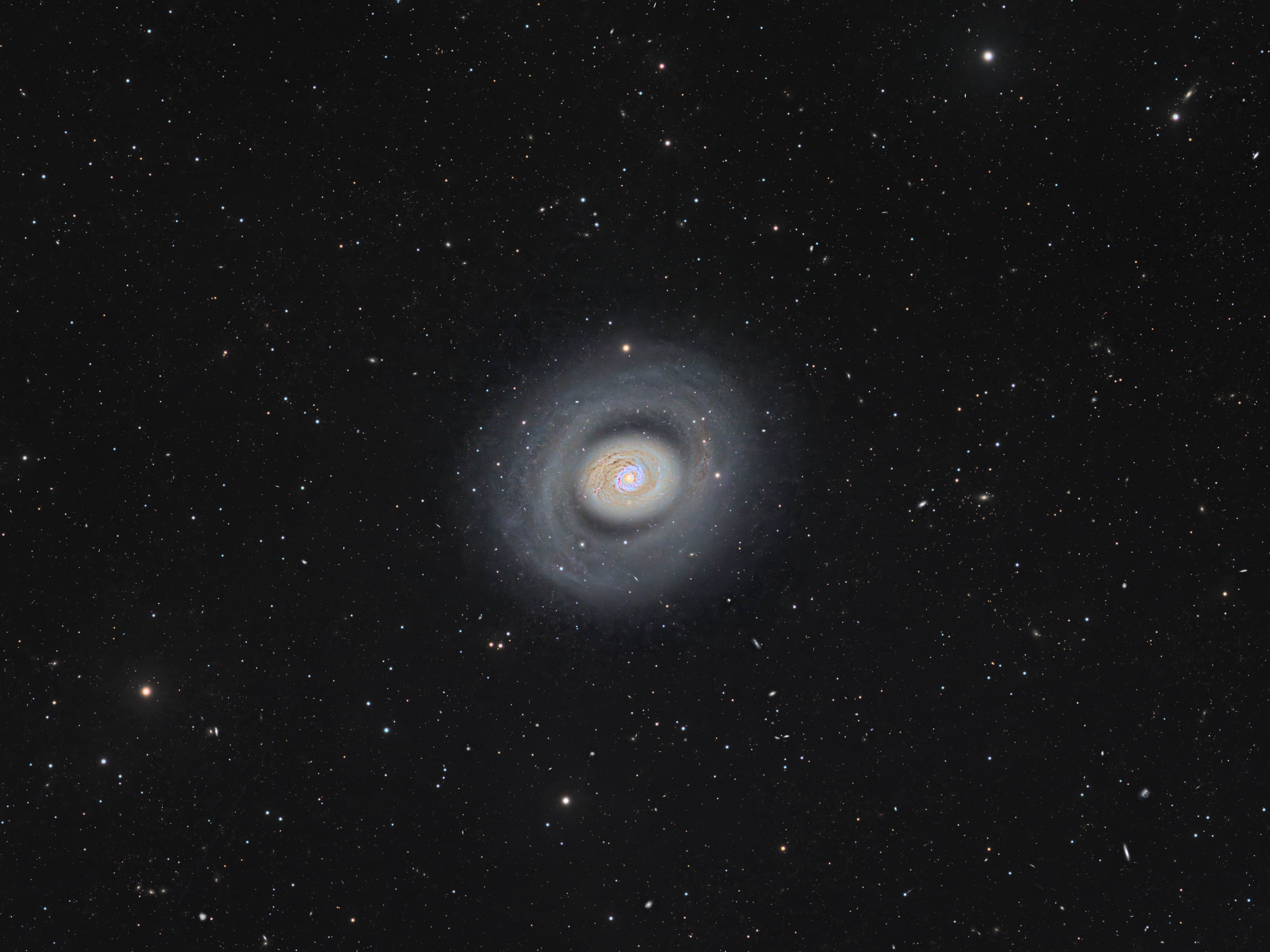Vermont-based astrophotographer Michele Hernandez Bayliss has captured stunning views of Messier 94 – also known as the Croc’s Eye galaxy – and the famous Whirlpool galaxy (M 51), both of which are embedded in the constellation Canes Venatici.
The Croc’s Eye galaxy was captured over the nights of April 20 and 21 using a Takahashi TOA-130NFB Refractor in concert with a Stellarvue SVX140T-R telescope, along with the host of peripherals needed to stably capture the deep sky images.
Over the course of 20 hours Hernandez Bayliss used the scopes to capture M94 with a series of luminance, red, green and blue (LRGB) filters, before combining the data using computer software to create a stunning view of the spiral galaxy, which exists 34 million light-years from our solar system.
“The tricky part about galaxies is the processing — for the Croc eye, the challenge was that it was a lot smaller than I thought in my 990mm scope but I was able to crop in a bit,” explained Hernandez Bayliss In an email to Space.com. “Also, it’s very bright in the core so I had to do a bit of HDR compression to bring out the core and do a careful job with the Synthetic Luminance I created from the LRGB,” she continued, referring to the filters used to capture the data.
Hernandez Bayliss was a long time visual astronomer before taking up astrophotography fairly recently, and has spent the last two years building a backyard observatory at her home in Weybridge, Vermont.
“The other challenge is getting dark nights with no moon for galaxies and clear nights as we don’t get that many clear nights in Vermont — so it was awesome to get two nights in quick succession with no clouds, no moon and clear skies — a miracle!”

Back in February, Hernandez Bayliss took aim at the Whirlpool galaxy using a set of RGB and hydrogen-alpha (Ha) filters to capture the fine structural detail of Messier 51, pictured above.
It took a grand total of 16 hours to capture data on the vast cosmic structure, which the amateur astronomer later compiled into a colorful portrait.
The image captures many of the sweeping features that one would hope to find in a ‘grand-design’ spiral galaxy, complete with a bright central core, dark dust lanes, and intense star forming regions.
As noted by NASA, some astronomers believe that the prominence of the M51’s spiral arms is likely the result of a close pass by the smaller galaxy NGC 5195, which can be seen in close proximity to the tip of the Whirlpool galaxy’s upper spiral arm in Hernandez Bayliss’s portrait.
If you’re looking for a telescope or binoculars to observe the solar system and beyond, our guides for the best binoculars deals and the best telescope deals now can help. Our guides on the best cameras for astrophotography and best lenses for astrophotography can also help you prepare to capture the next skywatching sight.
Originally posted on Space.com.
